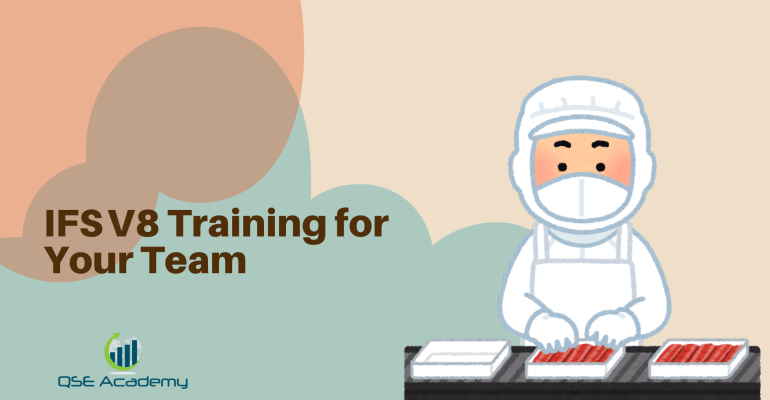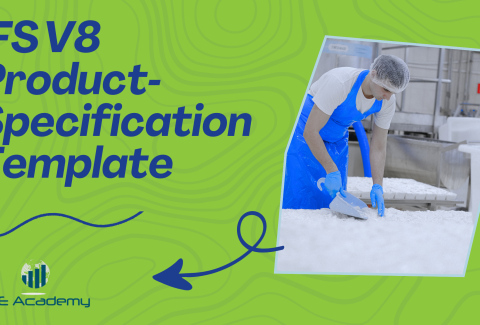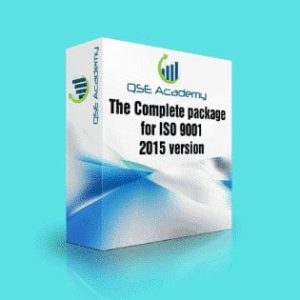IFS V8 Training for Your Team
Last Updated on November 18, 2025 by Melissa Lazaro
Training Is What Turns Requirements Into Real Practice
When I support teams preparing for IFS Food V8, one thing becomes clear quickly: the standard itself isn’t the hard part — making sure people understand and apply it consistently is where most companies struggle.
IFS V8 doesn’t just want proof of training attendance. Auditors want evidence of competence. That means your team must know what procedures apply to them, why those procedures matter, and how to execute them correctly every time.
If you’re building or improving your training system, this framework will help you design a clear, role-based training approach that strengthens operational discipline, improves audit readiness, and builds a culture where food safety feels like everyday behavior — not an extra task.
Build a Training Strategy and Framework — Start With a Clear Plan
Training shouldn’t be random or reactive. I’ve seen companies run dozens of sessions without improving competence simply because they didn’t have a plan. Before you start training, get clear on who needs what — and why.
Here’s what belongs in your framework:
- A list of all job roles across the site
- Competencies required per role based on IFS V8 and internal processes
- Training methods (e.g., on-the-job coaching, classroom learning, LMS modules)
- A documented schedule with recurring refreshers
A quick reminder: training isn’t just for new hires. Contractors, agency staff, and temporary workers must also be part of the program.
Pro Tip: Map each training element to a clause or risk area. This makes it easier to justify your program during audits.
Common mistake: giving the same depth of training to every employee. Supervisors and CCP operators need deeper understanding compared to general production staff.
 Core Training Topics — What Every Team Must Know Under IFS V8
Core Training Topics — What Every Team Must Know Under IFS V8
IFS V8 outlines key topics that every food-handling site must cover. The important part is aligning content to each role — so nobody receives unnecessary or irrelevant training.
Typical coverage includes:
- HACCP principles and food-safety basics
- GMP requirements and personal hygiene
- Allergen control and cross-contact prevention
- Record completion expectations
- Traceability, recall, and withdrawal procedures
- CCP and OPRP responsibilities
- Cleaning standards and verification expectations
I once worked with a facility that trained everyone on CCPs — even though only two operators ever touched CCP controls. They spent hours training the wrong people and ignored targeted competency checks. When you tailor training, you save time and prevent confusion.
Hands-On Competency Building — Because Knowledge Must Be Applied
People learn best by doing, not just listening. That’s why IFS V8 expects practical competency checks — especially for critical tasks.
Think about tools like:
- Shadowing and trainer observation
- Mock drills (e.g., allergen spills or traceability tests)
- Scenario-based questions during supervision
- Practical performance assessments
- Live demonstrations of CCP and OPRP controls
A real-world example: during a mock audit, a CCP operator explained the procedure perfectly — but couldn’t demonstrate calibration verification. Without hands-on competency checks, gaps like that go unnoticed until it’s too late.
Evaluate Training Effectiveness — Evidence Matters
IFS V8 doesn’t accept “we trained them” as proof. You must show that people understand the content and can apply it correctly.
Effective evaluation methods include:
- Short quizzes or digital checks
- Observation-based assessments
- Supervisor sign-offs after performance
- Corrective actions tied to retraining when errors occur
- Training review during internal audits
Keep records simple, consistent, and easy to retrieve. If an auditor asks for a training record and it takes ten minutes to find it, the problem isn’t knowledge — it’s system control.
Build Continuous Learning and Food-Safety Culture — Make Training an Ongoing Habit
Training shouldn’t happen only before audits or during onboarding. The best-performing sites integrate continuous learning into day-to-day operations.
Some ideas that work well:
- Short “toolbox talks” during shift start
- Micro-training videos posted near workstations
- Monthly refreshers based on audit trends
- Visual reminders like posters or checklists in production areas
- Peer mentoring for new or rotating staff
I’ve seen teams dramatically improve audit readiness simply by introducing consistent, short training moments rather than long, infrequent sessions.
FAQs — Common Questions Companies Ask During Training Development
Q1: How often should refresher training happen?
At least annually — but high-risk or critical roles should have more frequent refreshers.
Q2: Do temporary workers really need the same level of training?
Yes — especially hygiene, allergen control, and CCP-related topics. Risk doesn’t change based on employment status.
Q3: Do we need a digital training system?
Not necessarily. Paper works fine — as long as it’s consistent, controlled, and easy to retrieve.
Conclusion — Training Drives Compliance, Not Just Certification
IFS V8 makes one thing clear: training must create competence. When your team understands the why, not just the what, everything improves — fewer mistakes, better audit performance, and stronger food-safety culture.
Now that you have the framework, the next step is turning it into a living training matrix and tracking system your team can follow.
Melissa Lavaro is a seasoned ISO consultant and an enthusiastic advocate for quality management standards. With a rich experience in conducting audits and providing consultancy services, Melissa specializes in helping organizations implement and adapt to ISO standards. Her passion for quality management is evident in her hands-on approach and deep understanding of the regulatory frameworks. Melissa’s expertise and energetic commitment make her a sought-after consultant, dedicated to elevating organizational compliance and performance through practical, insightful guidance.


















